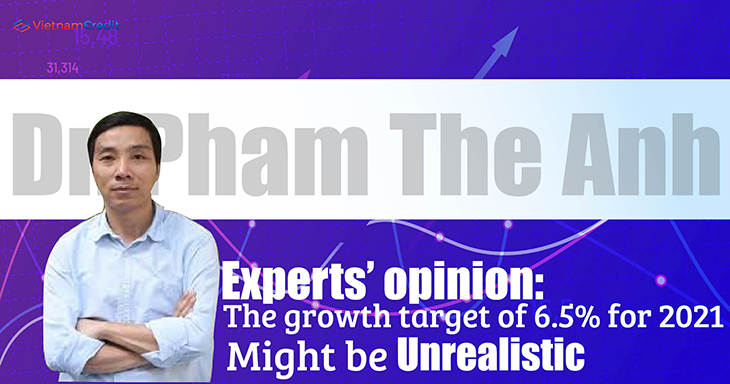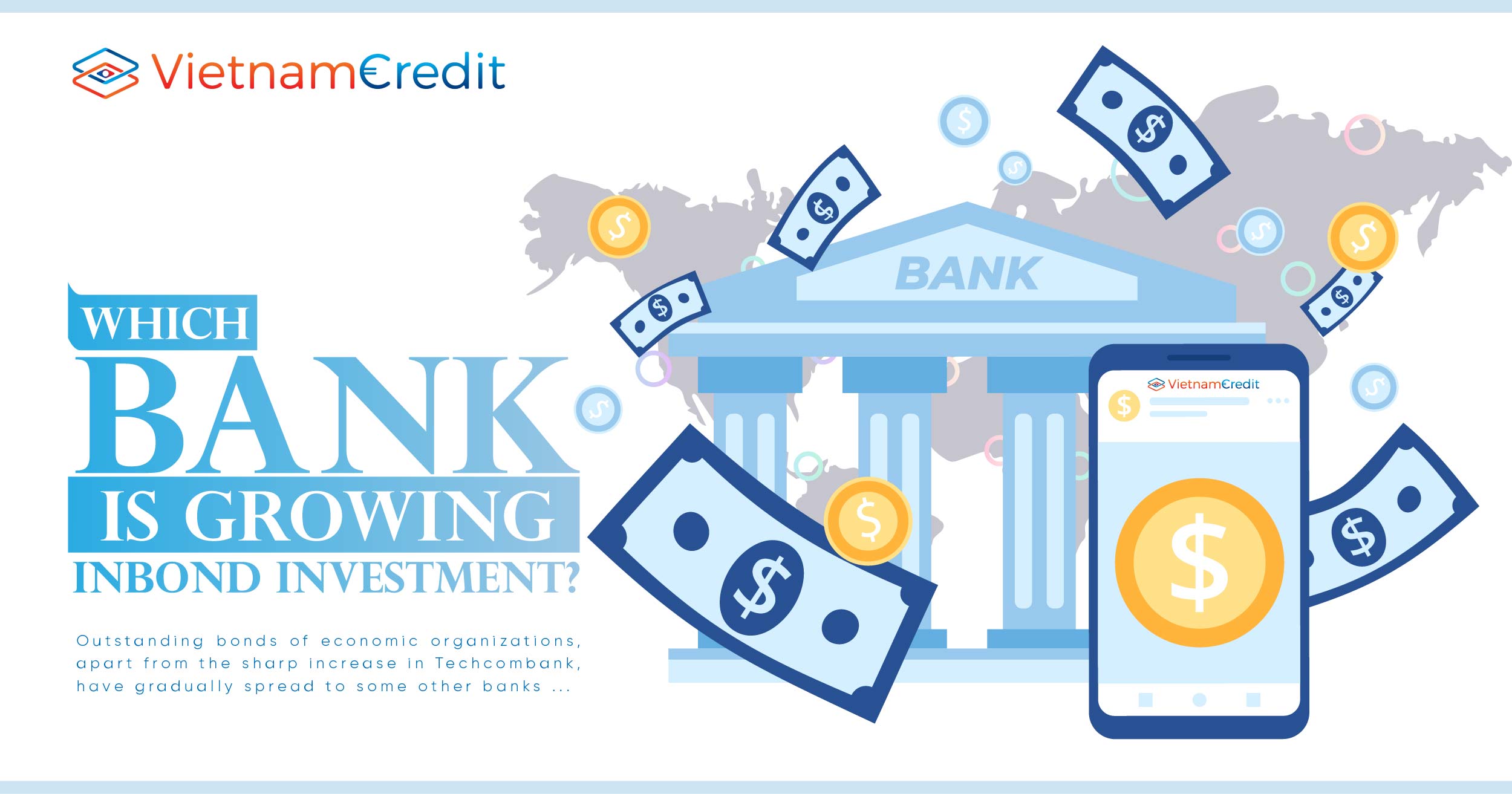Assoc.Prof.Dr Pham The Anh pointed out that public and foreign direct investment were the main drivers of Vietnam’s GDP growth in 2020, however, credit growth rate was 12.13%, which is really high. It is believed that the cash flow has been poured into asset channels that may create risks for the Vietnamese economy in the future.
Although the year 2020 witnessed several difficulties to the economy, Vietnam’s GDP growth rate still reached 2.91%, which made Vietnam become one of the fastest-growing economies in the world. This is considered an outstanding achievement of the Government for not only 2020 but the 2016-2020 term.
To have a closer look at the economic picture of Vietnam in 2020 and the outlook for 2021, please follow the interview with Assoc.Prof. Dr. Pham The Anh - Head of Macroeconomics Department, Faculty of Economics, School National University of Economic.
- What do you think about Vietnam’s GDP growth of 2.91% in 2020?
Assoc.Prof. Dr. Pham The Anh: That is a positive figure considering the epidemic and many difficulties in production. Where the driving force comes from, however, is another story.
Normally, economic growth results from three factors: consumption, exports, and investment. In terms of consumption, 2020 witnessed a sharp decrease due to declining income, intensive savings and the decline in the number of international tourists.
As for investment, it is clearly seen that the support for growth is public investment, while non-state investment has grown very slowly and foreign direct investment has declined.
In terms of merchandise exports, there was a huge surplus of 19.1 billion USD in 2020, but this achievement was mainly generated by the foreign investment sector.
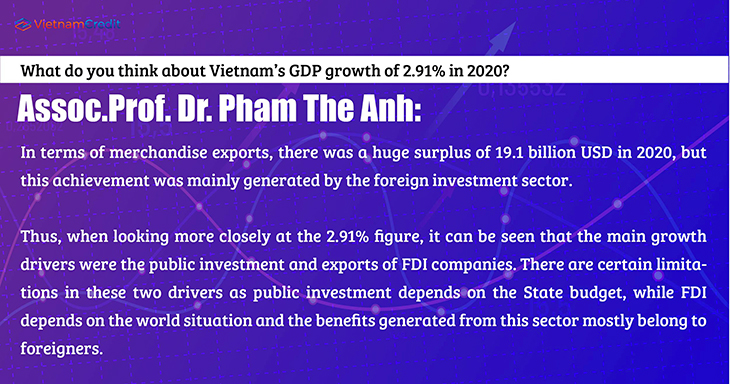
Thus, when looking more closely at the 2.91% figure, it can be seen that the main growth drivers were the public investment and exports of FDI companies. There are certain limitations in these two drivers as public investment depends on the State budget, while FDI depends on the world situation and the benefits generated from this sector mostly belong to foreigners. Assuming next year the epidemic is still raging around the world, and countries are still closed, will the momentum of growth in public investment and FDI be maintained?! So, I think next year growth will be quite tough if the epidemic persists.
- So, you are quite concerned about the growth target of 6.5% for 2021, aren’t you?
That is a very challenging! The world economy can recover to 4-5%, because it grows on a low base, while Vietnam grows on a high base. In the old normal conditions (without the pandemic), Vietnam could only achieve the growth rate of 6.5-7%, so what will happen if the pandemic still exists?!
By setting the target GDP growth of 6.5%, I think that Vietnam is placing great expectations on the world economic recovery, which is very uncertain.
- Regarding the three driving factors of the economy (consumption, export, investment), you have pointed out the nature of consumption and investment, what about exports?
We are quite excited with the record export surplus of 19.1 billion USD, but please note that this is just the export surplus of goods. The trade balance consists of two parts: goods and services. There was trade surplus in goods, yet services suffered from trade deficit. In 2020, Vietnam had a trade deficit of services worth 12 billion USD, 8 times higher compared to 2019. So, in reality, Vietnam only had a trade surplus of 7.1 billion USD.
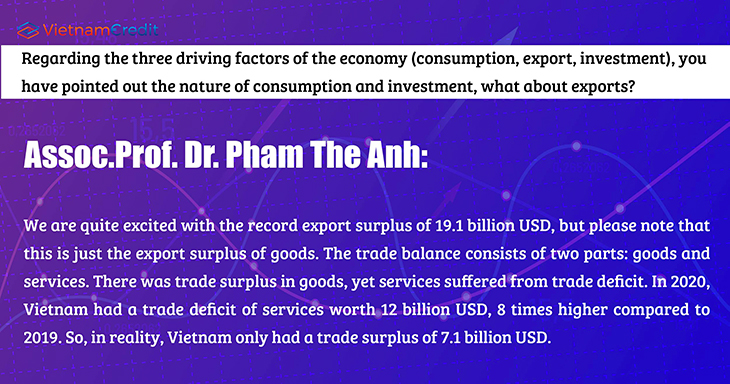
For the 19.1 billion USD surplus in goods, it can be seen that this record comes from FDI. This economic sector not only has higher export growth, but also accounts for a large proportion in the total export turnover. This shows an unhappy signal that FDI firms are adapting better to the current situation and taking advantage of the FTAs (free trade agreements) better than Vietnamese firms.
- Speaking of exports, the macroeconomic report for the third quarter of 2020 published by the Vietnam Institute for Economic & Policy Research (VEPR) expressed doubts about the import-export turnover of some products. There is a possibility that Vietnam is just a transshipment point, temporary import for re-export of Chinese goods to the US. As the Chief Economist of VEPR and with the year 2020 data available, do you still reserve this doubt?
When talking about exports, both the market and the commodity structures should be considered. Regarding the market, Vietnam's trade surplus came from the US (more than 60 billion USD). That means, if excluding the US, Vietnam might have a trade deficit of more than 40 billion USD. Export surplus to the US has put the entire trade balance of Vietnam into a state of surplus. This shows that more foreign companies have entered Vietnam to manufacture goods just for export to the US.
Although export surplus to the US is of course good, it also comes with risks. It is the risk that we depend on a market with which we do not have an FTA. Assuming that there were trade sanctions, it would be very tough for the Vietnamese economy. Currently, the US is investigating Vietnam on currency manipulation. Of course, the US accusation has many issues to discuss, but it is also a kind of risk for Vietnam.
While enjoying a trade surplus in the US, Vietnam had a large trade deficit with China. And this aroused doubts. This doubt is more grounded when looking at the commodity structure. Specifically, both exports and imports in 2020 had a sudden growth in some items such as computers, electronic products and components, machinery, equipment, etc. which Vietnam imported a lot from China then exported to the US.
In general, Vietnam benefitted very little from the above items. This exposes a painful reality that when there are benefits, FDI will enjoy most and if there are risks, Vietnamese enterprises will suffer most.
Regarding exports, there is another sad fact that export value of Vietnam’s traditional products such as textiles, footwear, and agricultural products has declined. For higher growth in 2021, these traditional goods must regain their previous form, because the demand for machines and electronic equipment may not last long as they are durable goods. However, whether traditional goods can be recovered or not depend completely on whether the European - US - Japanese countries will reopen or not.
- Another prominent issue in 2020 is credit growth. At the end of 2020, credit increased by 12.13%. But it is worth mentioning that only 10 days earlier, the State Bank had said that credit in 2020 increased by 10.14%. This means that in the last 10 days of the year, credit increased by 2 percentage points. Do you have any comment on these figures?
Credit growth in 2020 was nearly the same as that of the previous year, but GDP growth was far behind, so where has the money gone?
I ask this question because GDP growth in 2020 was driven by public investment and FDI, which use almost no credit.
I think that in addition to the government bonds having absorbed a huge amount of money in the economy, there are at least two reasons why this year credit growth was 12.13%.
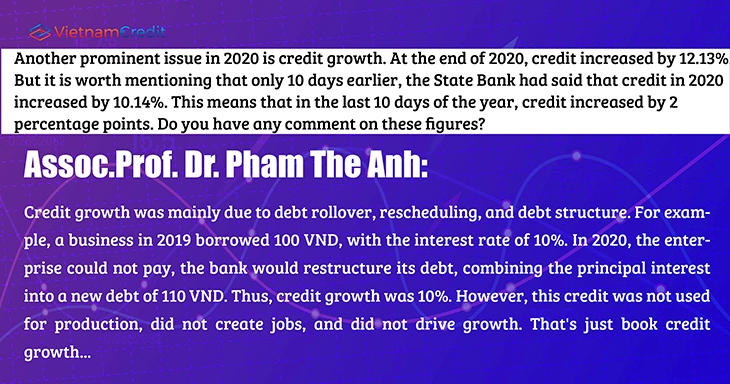
First, credit growth was mainly due to debt rollover, rescheduling, and debt structure. For example, a business in 2019 borrowed 100 VND, with the interest rate of 10%. In 2020, the enterprise could not pay, the bank would restructure its debt, combining the principal interest into a new debt of 110 VND. Thus, credit growth was 10%. However, this credit was not used for production, did not create jobs, and did not drive growth. That's just book credit growth.
Second, credit may not go directly into production, but into imported consumption channels (cars) and asset transactions (real estate and securities). This is quite clear: stock transactions in 2019 averaged 4,000 billion VND / session, in 2020, that in the year-end months reached 20,000 billion VND / session, which is very terrible. Moreover, real estate prices also skyrocketed.
Of course, commercial banks may not offer securities or real estate investments directly. But credit can go roundabout to pour into these asset channels. For example, a business with accumulated profits, under normal conditions, will use that profit to reinvest and expand production. However, due to the epidemic, interest rates were low, business owners borrowed money from banks to have operating money, and used accumulated profits to invest in securities and real estate.
Another case is that the business owner should have taken the money to pay the debt, but because the bank restructured its debt, that owner decided to invest in securities and real estate.
Therefore, it is difficult for state management agencies to be confident that credit has gone into production and business activities. If credit really goes into production and business activities, it is worrying, because credit quality is too poor (increasing by 12.13% while GDP only increased by 2.91%). I don't think the efficiency of capital is that low.
- What are your recommendations on monetary and fiscal policy for 2021?
My view has not changed: fiscal still needs to focus on what is necessary and practical. Support packages such as tax exemption or reduction (corporate income) or fee reduction (car registration) are all wasteful measures.
Vietnam's financial resources are limited, so it is important to keep the focus. The first priority is still welfare payments for unemployed workers. The second is public investment, concentrating capital on key projects that have a plan, because it is the foundation for future growth; resolutely saying no to unnecessary projects such as squares and monuments.
Regarding monetary policy, be cautious. Since the end of 2020, the asset price bubble phenomenon has appeared. The lower the interest rate by the government, the more it stimulates money to flow into the asset channel.
Credit growth also needs to be focused, do not be eager for achievement. What is the 12-13% credit growth for when money did not go into production and business activities? Monetary loose only enriches bankers and financial companies. During the epidemic outbreak, production enterprises faced a lot of difficulties while banks still reported huge profits, which is a very offensive economic phenomenon.
Next year, Vietnam will still face fiscal risks, when budget deficits are high and direct debt repayment / collection obligations hit ceiling. Monetary policy that creates asset bubbles is also extremely risky. When the epidemic is over, the economy recovers, inflationary pressure will increase. At that time, the Government has no choice but to increase interest rates to fight inflation and price bubbles. As a result, production companies will suffer.
What is needed to be done is to lower lending rates, not deposit rates. Lowering deposit rates, in a sense, is reducing the income of low-income people. When income falls, this class will tighten spending, causing lower demand. It can be said that the interest rate tool is unlikely to have any effect on Vietnam's economy in the current context.
Thank you for this interview!
Source: Vietnamfinance

